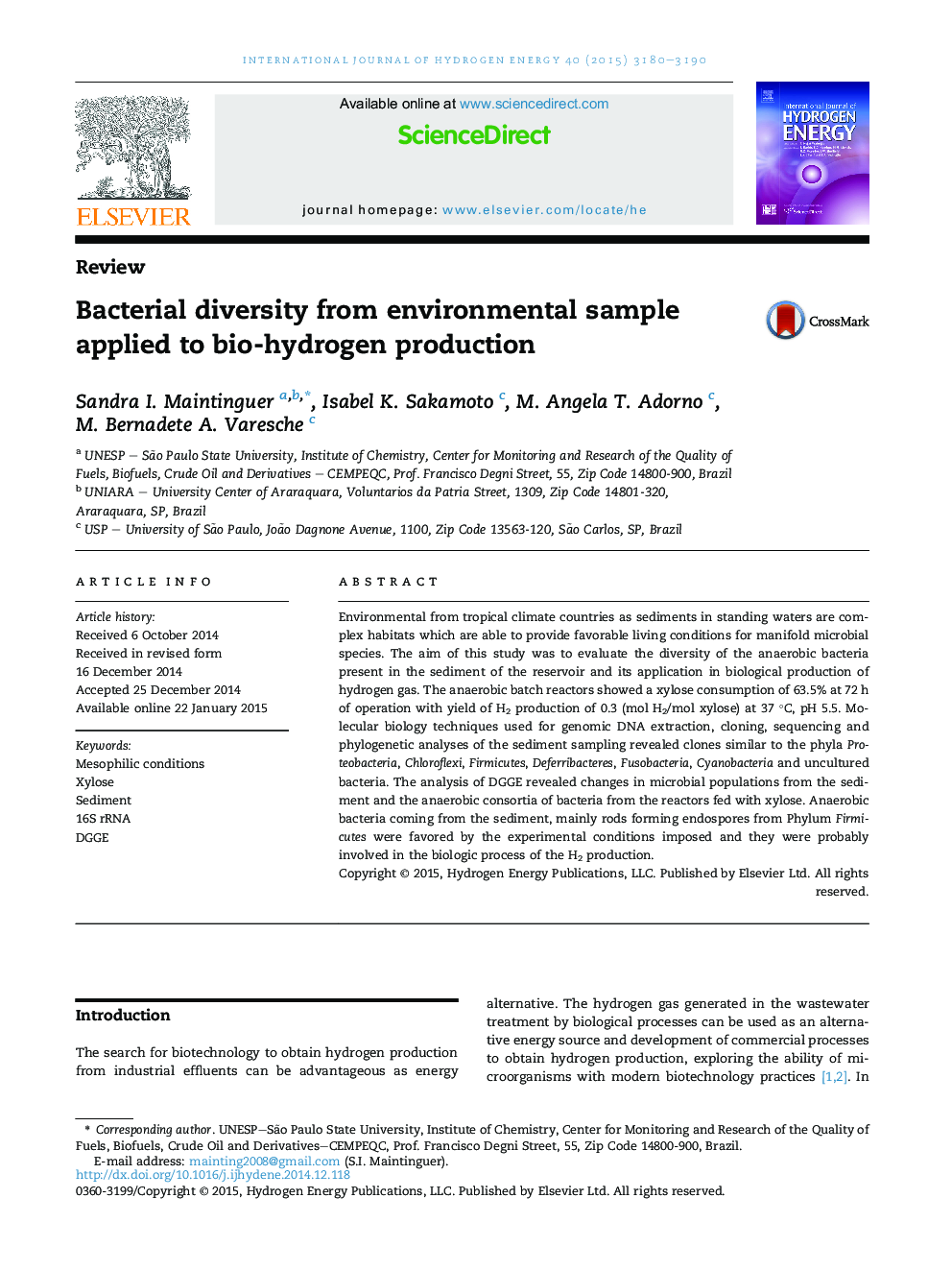| Article ID | Journal | Published Year | Pages | File Type |
|---|---|---|---|---|
| 1272013 | International Journal of Hydrogen Energy | 2015 | 11 Pages |
•Generation of hydrogen from reduced concentrations of xylose.•This study allowed for testing wastewater containing xylose to hydrogen generation.•Use consortia of anaerobic bacteria from sediment of the tropical countries such as Brazil.•Uses of wastewater contain xylose in small concentrations.
Environmental from tropical climate countries as sediments in standing waters are complex habitats which are able to provide favorable living conditions for manifold microbial species. The aim of this study was to evaluate the diversity of the anaerobic bacteria present in the sediment of the reservoir and its application in biological production of hydrogen gas. The anaerobic batch reactors showed a xylose consumption of 63.5% at 72 h of operation with yield of H2 production of 0.3 (mol H2/mol xylose) at 37 °C, pH 5.5. Molecular biology techniques used for genomic DNA extraction, cloning, sequencing and phylogenetic analyses of the sediment sampling revealed clones similar to the phyla Proteobacteria, Chloroflexi, Firmicutes, Deferribacteres, Fusobacteria, Cyanobacteria and uncultured bacteria. The analysis of DGGE revealed changes in microbial populations from the sediment and the anaerobic consortia of bacteria from the reactors fed with xylose. Anaerobic bacteria coming from the sediment, mainly rods forming endospores from Phylum Firmicutes were favored by the experimental conditions imposed and they were probably involved in the biologic process of the H2 production.
